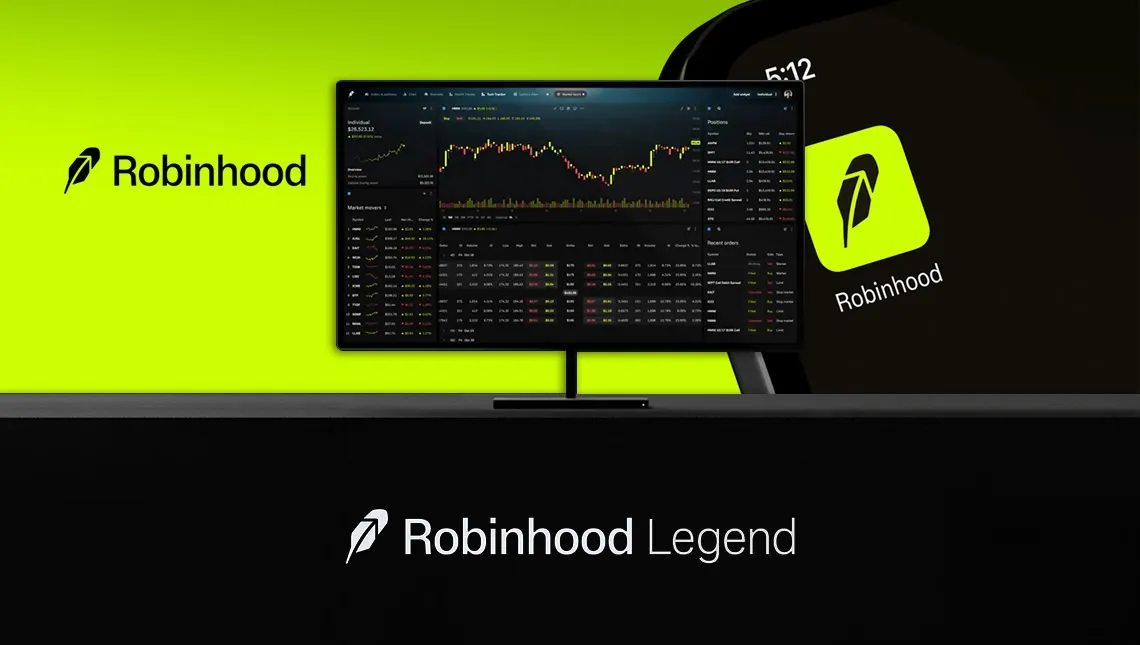October 17, 2024
While Robinhood’s new tools for active traders are great for those looking to be more hands-on with their investments, they don’t offer a way to directly lower taxes.

Robinhood has been a game-changer for individual investors since it entered the scene, making commission-free trading the norm and empowering millions of people to trade stocks, ETFs, and cryptocurrencies with ease. Now, Robinhood has rolled out three new products aimed at giving active traders more tools to manage their investments. But while these new updates may make trading easier, there’s still no direct way to lower taxes on your investments—something savvy investors are increasingly looking for.
Let’s break down the new features Robinhood has added, what they mean for active traders, and how you can look beyond trading platforms like Robinhood to reduce your tax burden through smarter investments, particularly in U.S. energy.

1. Extended Trading Hours
Robinhood has now expanded its trading hours to allow users to trade for nearly 24 hours during weekdays. This gives active traders more flexibility to react to market movements, even when traditional U.S. stock markets are closed. For investors who want to trade based on international news or after-hours earnings reports, this feature can be a big plus.
What It Means: If you’re an active trader, this allows you to jump in on trades during off-peak hours, which could lead to better prices on volatile stocks. However, for the average investor, the risk of trading outside regular market hours (when liquidity is lower) may not be worth the potential gains.
2. Advanced Charting Tools
Robinhood has introduced more advanced charting tools, which provide users with deeper insights into stock trends, performance, and technical indicators. These tools are more in line with what you’d find on professional trading platforms, giving active traders more data to make informed decisions.
What It Means: If you’re into technical analysis and like to predict price movements based on trends, these new charts can be a valuable resource. For casual investors, this might not be as exciting, but it’s a step forward for those who want more control and insight over their trades.
3. Options Rolling
For options traders, Robinhood has introduced “rolling,” which allows users to extend or adjust their options positions before they expire. This can be useful for investors who want to keep a position open but tweak their strategy, potentially avoiding significant losses.
What It Means: If you trade options, this can help you manage risk more effectively and adapt to changing market conditions. However, options trading is inherently risky and not suitable for everyone, so it’s essential to fully understand how rolling works before diving in.

While Robinhood’s new features make trading more flexible and informed, they don’t offer a way to directly reduce your tax bill. Active traders can often end up paying higher taxes due to short-term capital gains, which are taxed at a higher rate than long-term gains. This is where investing in other areas, like U.S. energy, comes in.
How U.S. Energy Investments Can Lower Your Taxes
Investing in U.S. energy, particularly oil and gas, offers some of the most significant tax advantages available. Here’s why:
When you invest in U.S. energy, specifically in drilling projects, a large portion of the costs (known as Intangible Drilling Costs) are 100% tax-deductible in the first year. This means you can deduct up to 85% of your investment in the year you make it, directly lowering your taxable income.
In addition to IDCs, Tangible Drilling Costs (for equipment and machinery) are also 100% deductible, but they’re depreciated over several years. This gives you ongoing tax deductions as your investment progresses.
Once oil or gas is extracted and sold, investors can benefit from a depletion allowance, which makes 15% of the gross revenue from production tax-free. This is a long-term tax benefit that continues as long as the well is producing.
One of the biggest benefits of investing in U.S. energy is that the income generated is not considered passive. This means you can use any losses to offset other income, including active income, which can significantly lower your overall tax bill.
Beyond the tax advantages, investing in U.S. energy is also a way to support critical infrastructure. Energy powers the data centers that run AI, cloud services, and all the tech driving the modern economy. As we become more reliant on AI and data, the demand for energy will only increase, making it a potentially lucrative investment while also benefiting from unmatched tax breaks.
While the idea of investing in energy sounds great, it can be risky if you don’t know where to start. That’s where platforms like Fieldvest come in. Fieldvest vets the best owner-operators in the U.S. and matches accredited investors with high-quality projects that offer the potential for strong returns and the highest possible tax advantages.
By investing through Fieldvest, you get access to well-vetted energy projects, lowering your risk while maximizing your tax savings. It’s a smart way to diversify your portfolio, take advantage of the U.S. tax code, and support the energy infrastructure that powers our economy.
While Robinhood’s new tools for active traders are great for those looking to be more hands-on with their investments, they don’t offer a way to directly lower taxes. For high earners looking to reduce their tax burden while still getting solid returns, investing in U.S. energy is a powerful option. Platforms like Fieldvest make it easier by connecting you with vetted operators and projects, giving you the best chance to benefit from both investment returns and significant tax savings.
If you’re ready to take advantage of these benefits, start exploring energy investment opportunities today. It could be the key to both growing your wealth and lowering your taxes.